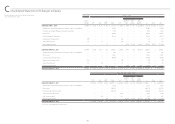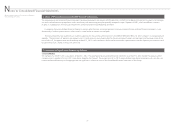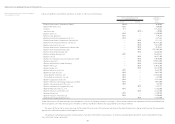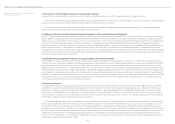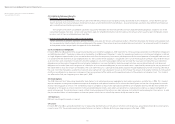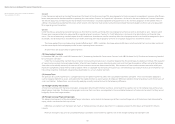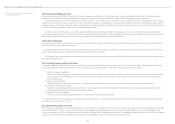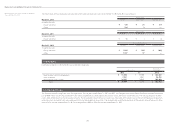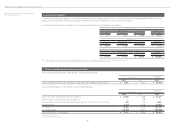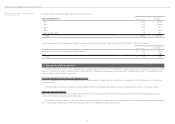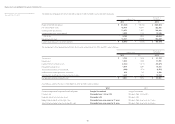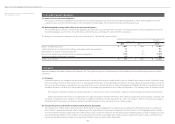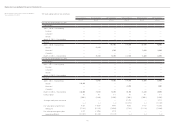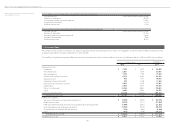Brother International 2012 Annual Report Download - page 34
Download and view the complete annual report
Please find page 34 of the 2012 Brother International annual report below. You can navigate through the pages in the report by either clicking on the pages listed below, or by using the keyword search tool below to find specific information within the annual report.
33
(23) Derivative and Hedging Activities
The Group uses derivative financial instruments to manage its exposures to fluctuations in foreign exchange. Foreign exchange forward contracts and currency option
contracts are utilized by the Group to reduce foreign currency exchange. The Group does not enter into derivatives for trading or speculative purposes.
Derivative financial instruments and foreign currency transactions are classified and accounted for as follows: a) all derivatives are recognized as either assets or
liabilities and measured at fair value, and gains or losses on derivative transactions are recognized in the consolidated statements of income and b) for derivatives used for
hedging purposes, if derivatives qualify for hedge accounting because of high correlation and effectiveness between the hedging instruments and the hedged items, gains
or losses on derivatives are deferred until maturity of the hedged transactions.
Foreign currency forward contracts and currency option contracts employed to hedge foreign exchange exposures are measured at fair value and unrealized gains
(losses) are recognized in income. Foreign currency forward contracts and currency option contracts applied for forecasted (or committed) transactions are also measured
at fair value, but the unrealized gains (losses) are deferred until the underlying hedged transactions are completed.
(24) Per Share Information
Basic net income per share is computed by dividing net income available to common shareholders by the weighted-average number of common shares outstanding for
the period, retroactively adjusted for stock splits.
Diluted net income per share reflects the potential dilution that could occur if securities were exercised. Diluted net income per share of common stock assumes full
exercise of outstanding warrants at the beginning of the year (or at the time of issuance).
Cash dividends per share presented in the accompanying consolidated statement of income are dividends applicable to the respective years including dividends to be
paid after the end of the year.
(25) Accounting Changes and Error Corrections
In December 2009, the ASBJ issued ASBJ Statement No.24, “Accounting Standard for Accounting Changes and Error Corrections” and ASBJ Guidance No.24, “Guidance on
Accounting Standard for Accounting Changes and Error Corrections.” Accounting treatments under this standard and guidance are as follows:
(1) Changes in Accounting Policies
When a new accounting policy is applied with revision of accounting standards, the new policy is applied retrospectively unless the revised accounting standards
include specific transitional provisions. When the revised accounting standards include specific transitional provisions, an entity shall comply with the specific
transitional provisions.
(2) Changes in Presentations
When the presentation of financial statements is changed, prior-period financial statements are reclassified in accordance with the new presentation.
(3) Changes in Accounting Estimates
A change in an accounting estimate is accounted for in the period of the change if the change affects that period only, and is accounted for prospectively if the
change affects both the period of the change and future periods.
(4) Corrections of Prior-Period Errors
When an error in prior-period financial statements is discovered, those statements are restated.
This accounting standard and the guidance are applicable to accounting changes and corrections of prior-period errors which are made from the beginning of the fiscal
year that begins on or after April 1, 2011.
(26) Consolidated corporate tax system
The Company has applied for a consolidated corporate tax system because the Company and some of its consolidated subsidiaries are scheduled to adopt the system from
the year ended March 31, 2013. As a result, the Company has been adopting accounting treatments as a prerequisite to the adoption of a consolidated corporate tax
system in accordance with PITF No.5 “Practical Solution on Tentative Treatment of Tax Effect Accounting Under Consolidated Taxation System (Part 1)” and PITF No.7 “Practical
Solution on Tentative Treatment of Tax Effect Accounting Under Consolidated Taxation System (Part 2)” from the current year.
Notes to Consolidated Financial Statements
Brother Industries, Ltd. and Consolidated Subsidiaries
Year ended March 31, 2012




